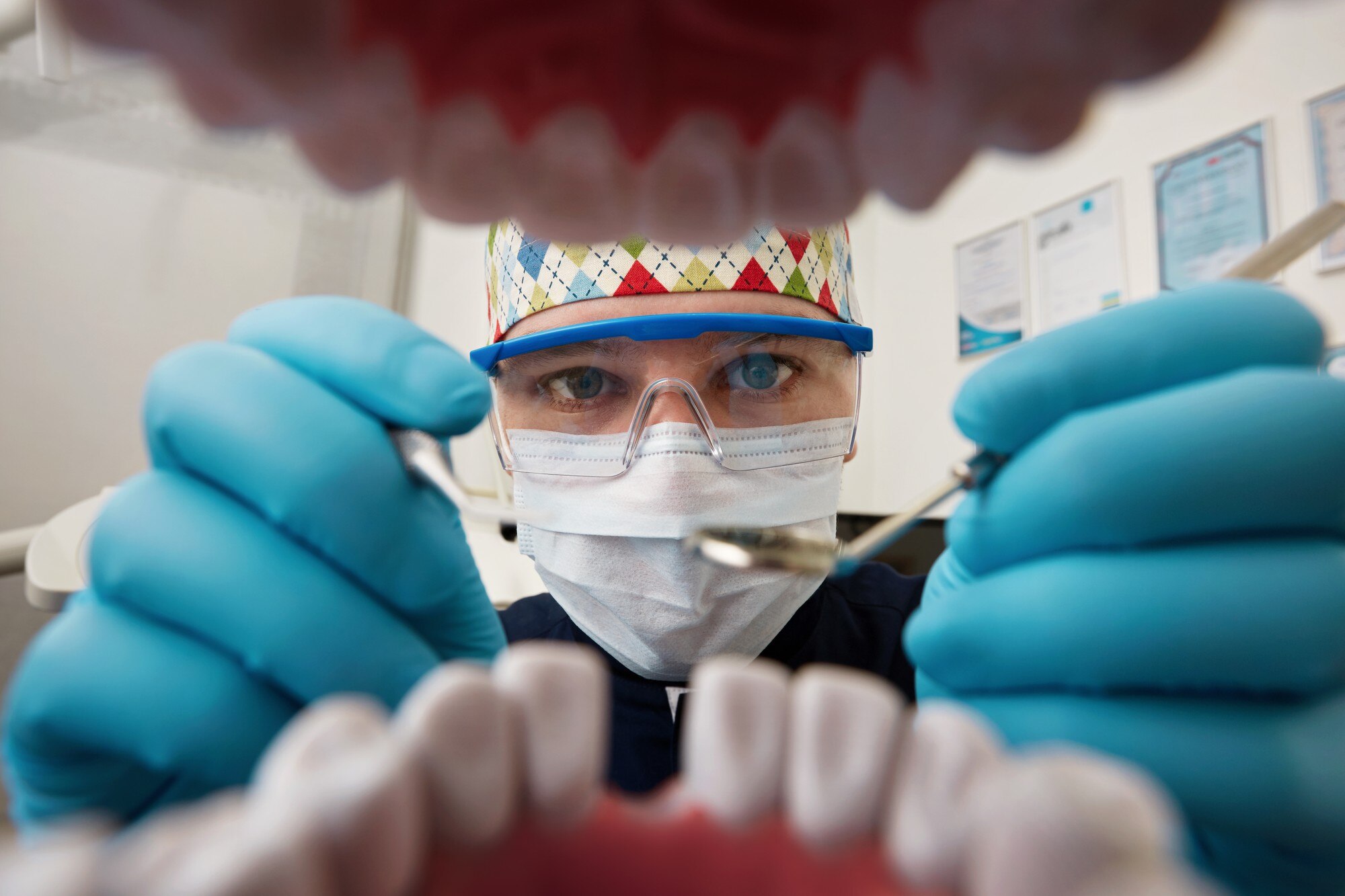Dentures (removable artificial teeth) are a sturdy and flexible option for the replacement of missing teeth. Typically made of acrylic or metal, full dentures rest on the gums and can replace all the teeth in either your upper or lower arch. Partial dentures are used to replace a few missing teeth rather than a whole arch, and are held in place by metal clasps around the remaining teeth. Dentures are designed to be able to be removed for cleaning, and should fit securely while in your mouth, allowing for comfortable speaking, smiling and eating.
So, if they’re designed to be removed continually, why would they need to be stabilised? Let’s take a dive into the reasons behind denture stabilisation, and four essential things you need to know about this practice.
Firstly, why would you need denture stabilisation?
While dentures are a great and cost-effective solution to the problem of missing teeth, they do come with some problems. Dentures can be prone to slipping and moving around in your mouth – and loose and ill-fitting dentures can significantly affect your ability to eat and speak. Those who have suffered with poorly fitting dentures will know all about the pressure sores and discomfort that can be caused by the friction of movement. And then there’s also problems with chewing, interrupted speech, gum irritation and bone tissue shrinkage. All of which are not ideal.
Dental adhesives have been commonly used in the past to prevent dentures slipping and moving – but such adhesives can create an unpleasant taste in the mouth. But nowadays, advancements in dental technology have led to a better solution for loose dentures – denture stabilisation.
So, what exactly is denture stabilisation?
Denture stabilisation involves fixing your dentures to your jaw with dental implants. This procedure is a long-term solution for people who have suffered with poorly fitting dentures in the past, and can significantly improve your quality of life. It’s a much more permanent solution that dentures alone, and will allow you to enjoy eating your favourite foods and smile confidently, knowing that your dentures will stay where they’re supposed to.
What are the benefits of denture stabilisation?
There are plenty of benefits to this practice (which is why it’s become increasingly popular in recent years), including:
- Better denture stability. Denture stabilisation prevents your dentures from slipping or moving around when you’re eating or speaking, and provides a stable and secure foundation for your dentures.
- Higher comfort levels. As the dentures are held in place by the implant, rather than being supported on the gums, they are much more comfortable for the wearer, and your gums will be less irritated.
- Better chewing ability. Stable dentures allow you to chew with greater ease and comfort, and in a much more natural way.
- Better speaking ability. You’ll also be able to speak more naturally without dentures moving around in your mouth.
- More natural smile. You can smile securely and naturally once your dentures have been stabilised.
- More confidence. Stable dentures leave you free from worry, and allow you to move through your life with greater self-esteem and confidence.
- You can enjoy a wider range of food. Rather than having to stick to soft foods for the rest of your life, denture stabilisation allows you to eat, bite and chew without your dentures falling out.
- Greater ease with cleaning. You can treat your dental implants just like all your other teeth, which just need flossing daily and brushing twice a day.
- Better quality of life. What all this adds up to is a better overall quality of life.
What is the process for denture stabilisation?
There are a number of steps in the process (it’s not a quick one), which are as follows.
Stage 1: Preparation
Before any denture stabilisation process can take place, your overall oral health will need to be assessed by your dentist, who will determine if you’re a suitable candidate for implant-supported dentures. If you are considered suitable, your dentist will develop a customised treatment plan, which will outline how many implants you need, where they will be placed and the type of denture attachment that will be used. Your dentist will also settle on a sedation option (in consultation with you), as well as a suitable payment plan for the treatment.
Stage 2: Surgery
Once the plans are in place, it’s time for implant placement surgery, where the dental implants are surgically placed into the jawbone at strategic sites. The procedure is usually performed under general anaesthetic
Stage 3: Osseointegration
This stage takes the longest time, as the implants fuse with the jawbone through a process call osseointegration. You’ll need to wait several months for this process to happen, before you can move onto the next stage.
Stage 4: Denture attachment
A denture attachment (or connector) is added to the denture base once the implants have fused with your jawbone. There are a number of different attachment types you can choose.
Stage 5: Denture fitting
After the implants have fused and the attachment has been added, the actual denture is finally placed.
Stage 6: Perfecting the fit
Often, your dentures will need to be slightly adjusted to ensure a secure and comfortable fit. Once this is done, you’ll still need regular follow-up appointments with the dentist to monitor the implants and make necessary adjustments to ensure a secure and stable fit.
Can I still remove my dentures for cleaning?
The really great thing about denture stabilisation is that while it firmly fixes your dentures in place, you can still remove them to give your jaw a break or to clean them.
Want to know more about denture stabilisation and whether you might be a good candidate for this useful process? Get in contact with the experts at Lentini Dental here: https://www.lentinidental.com.au/contact-us/




